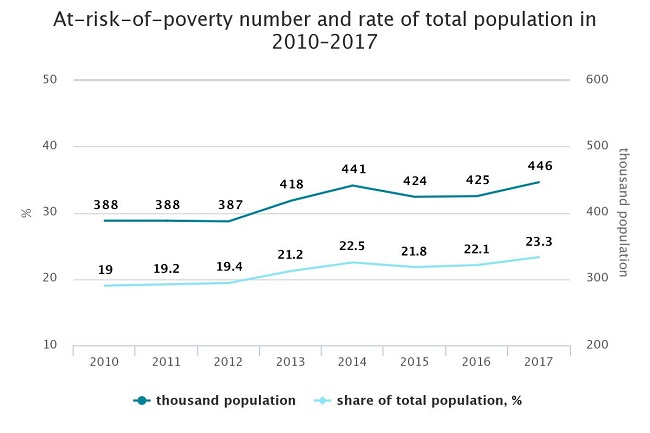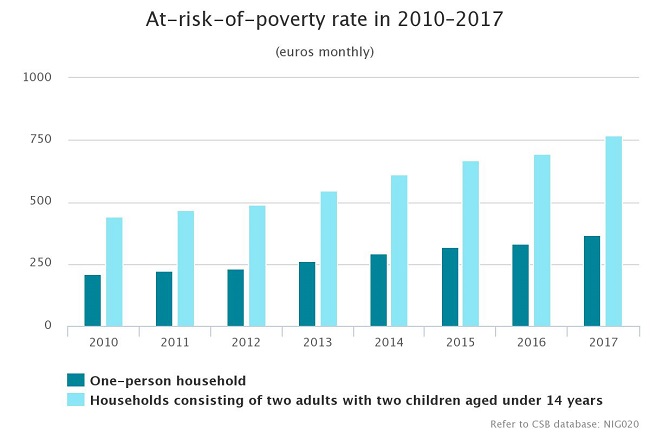Analytics, Financial Services, Latvia, Statistics
International Internet Magazine. Baltic States news & analytics
Friday, 02.01.2026, 18:25
23.3% of Latvia population at risk of poverty
 Print version
Print version

The share of population at-risk-of-poverty was the largest within the single elderly population age group over 65 years. In 2017 their share comprised 74 % (in 2016 – 72.8 %). Another largest at-risk-of-poverty rate was in single parent families (one adult with children) (32.6 %), among persons aged under 64 years living alone (31 %) and in large families (couple with three or more children) (20.5 %).
The lowest at-risk-of-poverty rate was among employed persons (8.1 % in 2017 and 8.8 % in 2016). In turn, significantly higher at-risk-of-poverty rate was faced by unemployed persons (59.5 % in 2017 and 56.6 % in 2016) and retired (48.9 % in 2017 and 43.7 % in 2016).
Over the last years impact of social transfers to population income is reducing. In 2017, support provided by social transfers has lowered share of population at-rate-of-poverty by 15.8 percentage points. If social transfers would not exist, 39.1 % of population would be at risk of poverty. In 2016, social transfers reduced at-risk-of-poverty by 17.8 percentage points, in 2015 and 2014 – by 18.4 percentage points.
More information on poverty of population and social exclusion risks is available in informative leaflet "At risk of poverty or social exclusion in Latvia" and in CSB database section “Monetary poverty and income inequalty (EU-SILC)".
The data source of the relative poverty and social exclusion indicators is the European Union Statistics on Income and Living Conditions (EU-SILC) survey of 2018 conducted by the CSB. The survey covered 6 thousand households and 10.8 thousand respondents aged 16 and over. The CSB will collect data on the household poverty risk in 2018 within the framework of the survey of 2019, and respondents will have a possibility to fill in the questionnaire online.








 «The Baltic Course» Is Sold and Stays in Business!
«The Baltic Course» Is Sold and Stays in Business!

